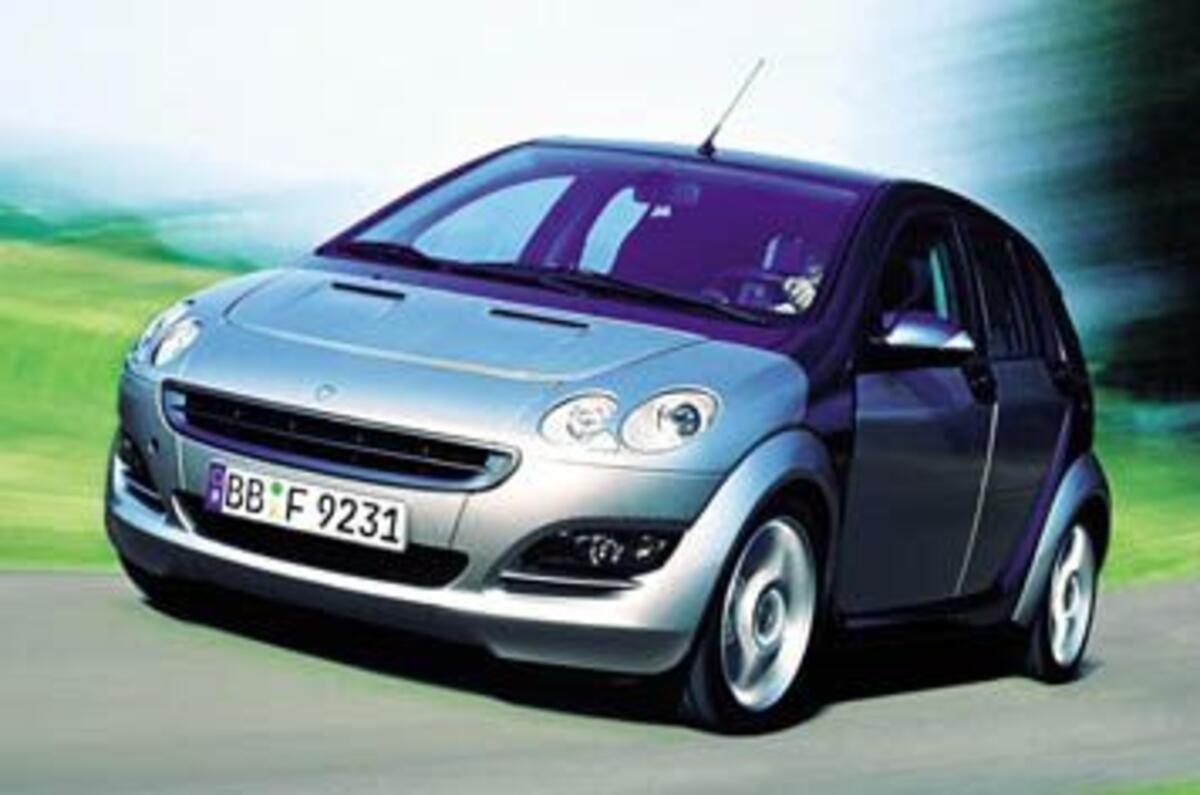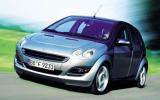This is positively staid by Smart standards – a four-seater supermini with transverse four-cylinder engines, a manual gearbox and front-wheel drive. It’s all a far cry from the two-seater Rubik’s Cube of a city car and the ’60s-throwback roadster.
Smart is not entirely abandoning its eccentricities with the aptly-named Forfour, though. There will be three-cylinder engines in the range (a 1.1 petrol rather than the pint-pot affair that powers the company’s other models, plus two 1.5-litre diesel triples) and a two-pedal semi-automatic ’box remains an option. The outer body panels are again made of plastic, though here they are bolted to a conventional steel sub-structure rather than the Tridion safety cell that’s a core feature of other Smarts.
Still, the Forfour is a more-or-less conventional small car. It's the product of a joint venture with Mitsubishi which has also spawned the new Colt, a steel-bodied supermini similar in style, size and appearance to the Honda Jazz. Both go on sale in September.
Their creators are coy about who did what exactly. The gist seems to be that Mitsubishi contributed its know-how with small cars and low-capacity petrol engines while Smart brought Mercedes-Benz’s common-rail diesel technology and its experience with clutch pedal-less gearboxes to the table.
Both cars will be offered with the 1.1-litre, 75bhp three-pot engine as well as a couple of four-cylinder units – a 95bhp 1.3 and a 109bhp 1.5 – and a 1.5 turbodiesel triple tuned to deliver either 68 or 95bhp. The five-speed manual ’box comes from Mitsubishi, the six-speed semi-auto from Smart, though it’s an all-new ’box with twin cones so that as soon as you select one ratio, the next is primed for action. The idea is that the shifts are quicker and smoother than the frustrating lurches of other Smarts. There’s also a full-auto mode.
Smart has managed to preserve a family look by painting the visible parts of the Forfour’s metal structure a different colour to the plastic doors, wings, bonnet, roof and tailgate, and through the style of the lights. Finger-wide panel gaps, particularly around the doors, lend the Forfour a tacked-together feel, but interior materials and surface finishes make the cabin the company’s most tactile yet.
The essential durability for family use has not been overlooked, though, and nor has the company’s sense of fun: the water temperature gauge and clock stick up from the dash on stalks, like the eyes of a cartoon frog. The driving position will suit most people, though it’s what is possible behind the front seats that makes this Smart stand out from earlier models.
The rear bench slides fore and aft by up to 150mm and you can tilt it backwards, fold it in half or tumble it out of the way. Still not satisfied? Then how about the optional ‘lounge concept’ – folding front seats that allow you to sprawl in the back. No, we don’t see the point, either.
A three-person bench with an extra inertia-reel belt is another option, but the car is best configured for four. The back is just about big enough for a couple of adults, though access isn’t as easy as in some superminis. The Smart is smaller than the Colt in every dimension bar wheelbase, but not significantly lighter.













Add your comment